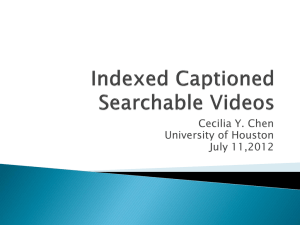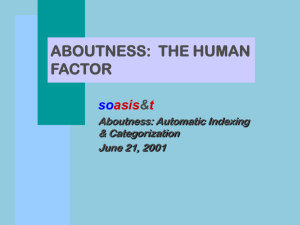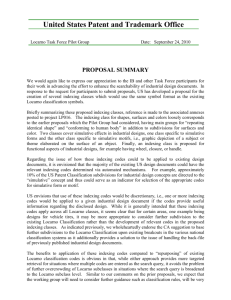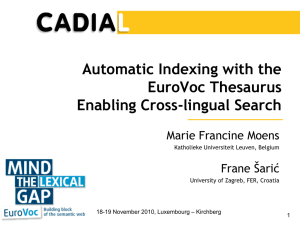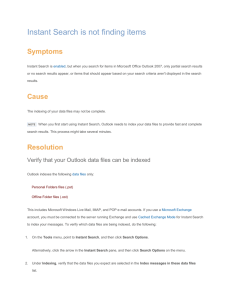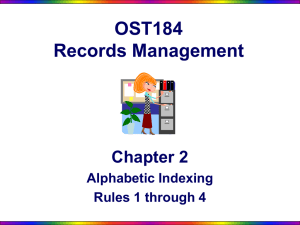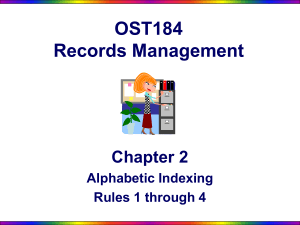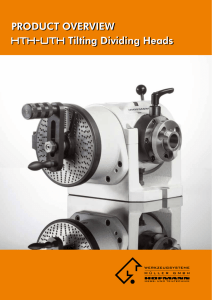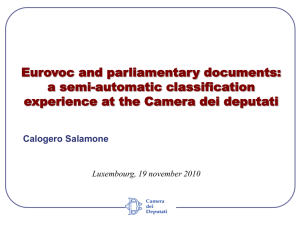Types of Indexing Techniques
advertisement
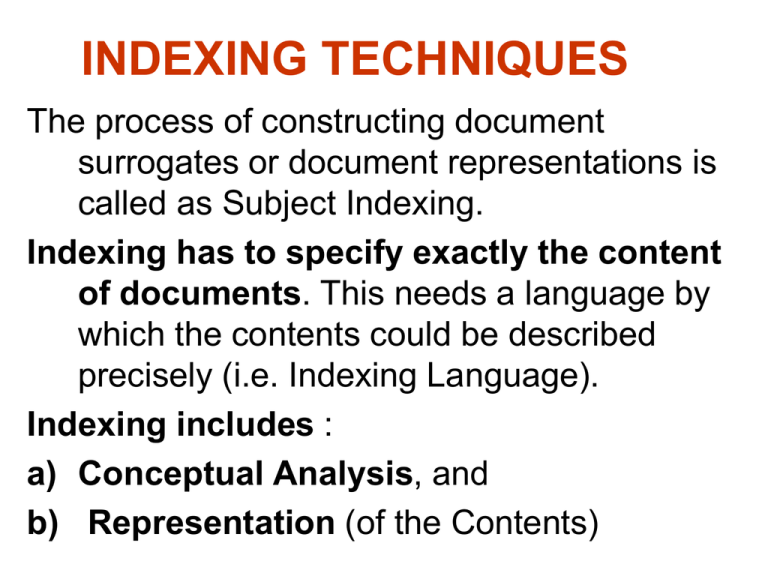
INDEXING TECHNIQUES The process of constructing document surrogates or document representations is called as Subject Indexing. Indexing has to specify exactly the content of documents. This needs a language by which the contents could be described precisely (i.e. Indexing Language). Indexing includes : a) Conceptual Analysis, and b) Representation (of the Contents) Types of Indexing Techniques : There are broadly two types of Indexing Techniques or Indexing Methods. They are : a) Pre-Coordinate Indexing, and b) Post-Coordinate Indexing. Pre-Coordinate Indexing Systems : A Compound or composite subject is analyzed into its constituent concepts according to a plan and these constituent concepts are then represented by symbols (when using a Classification Scheme) or Words of the Indexing Language in use. The next step is to synthesize or combine the components in order, according to the rules of the language (i.e. coordination of concepts). • That is the Coordination of concepts contained in a documents is done in-anticipation of readers approach. • In Pre-coordinate Indexing systems, the Subject Heading consists of two or many index terms and these terms are arranged in a pre-determined order using its own syntax or the citation order. • The Characteristics of Indexing language are the syntax, the method of rotation or cycling of components, the significant word order, use of relationship symbols, system of references, etc. • The examples are : Chain Indexing, PRECIS,etc. Post-Coordinate Indexing Systems: A compound or composite subject is analyzed into its constituent components, but they will be kept separately uncoordinated by the indexer. • Coordination of concepts is done at the time of search by the user. • These indexing systems could bypass / overcome the most difficult question of deciding on an order of significance (which eventually controls the approaches that could be provided by a pre-coordinate Indexing system). • E.g. Uniterm Indexing; Zatocoding system; Optical coincidence methods(Peek-a-Boosystem)

